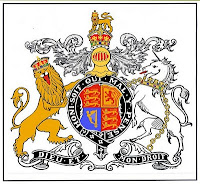Franglophilia
 French and Anglophilia are words one seldom sees in conjunction. Anglophilia is more commonly associated with nineteenth century American heiresses seeking to snag the odd duke and finding themselves up to their elbows in marmalade and roof-replacement. As for the French attitude towards the English, hamsters and elderberry come to mind, courtesy of Monty Python.
French and Anglophilia are words one seldom sees in conjunction. Anglophilia is more commonly associated with nineteenth century American heiresses seeking to snag the odd duke and finding themselves up to their elbows in marmalade and roof-replacement. As for the French attitude towards the English, hamsters and elderberry come to mind, courtesy of Monty Python. And why wouldn’t the two nations be hostile? They seem to have spent the better part of ten centuries fighting one another, in various numerical increments: the Hundred Years’ War, the Seven Years’ War, the Napoleonic Wars, and, more recently, via the less obvious but no less bellicose means of EU regulatory committees. Even the American Revolution provided a playing field for Anglo-French hostilities.
Nonetheless, for a brief period in the 18th century, Anglophilia was all the rage among a certain class of Frenchman.
 The famed French philosopher Voltaire fell head over heels for the foggy little island across the Channel, declaring, “if ever I smell of a Resurrection, or come a second time on Earth, I will pray to God to make me born in England, the Land of Liberty”. He lived for two years in London, mingling with the English literati, returning to France to write his Letters Concerning the English Nation, an exploration of English politics and society.
The famed French philosopher Voltaire fell head over heels for the foggy little island across the Channel, declaring, “if ever I smell of a Resurrection, or come a second time on Earth, I will pray to God to make me born in England, the Land of Liberty”. He lived for two years in London, mingling with the English literati, returning to France to write his Letters Concerning the English Nation, an exploration of English politics and society.Voltaire wasn’t the only “anglomaniac” in France. A mélange of English commodities and customs made their way across the Channel.
 The novels of Samuel Richardson set off a vogue in France for tales of star-crossed love involving heroes and heroines with barbarously spelled British names, from Fanni to Wuillaume. The English style in gardens, the wilderness as opposed to the rigorously formal French model, was also admired and imported, the Duc de Chartres bragging that he had filled his garden with “a profusion of English delights”. Noblemen adopted racing and hunting on the English model, purchasing horses and packs of hounds to copy the pastimes of their English counterparts. Even the flush toilet made its way to France, dubbed “a l’anglaise as a tribute,” one historian writes, “to what [the French] perceived as the English attention to comfort”.
The novels of Samuel Richardson set off a vogue in France for tales of star-crossed love involving heroes and heroines with barbarously spelled British names, from Fanni to Wuillaume. The English style in gardens, the wilderness as opposed to the rigorously formal French model, was also admired and imported, the Duc de Chartres bragging that he had filled his garden with “a profusion of English delights”. Noblemen adopted racing and hunting on the English model, purchasing horses and packs of hounds to copy the pastimes of their English counterparts. Even the flush toilet made its way to France, dubbed “a l’anglaise as a tribute,” one historian writes, “to what [the French] perceived as the English attention to comfort”.Not so surprising that a French philosophe in the age of Louis XV might extol English political freedoms or that the aristocracy might stock up on horses and hounds; what was more surprising was that a certain segment of French society began to ape English fashion.
 Beginning around the same time George III succeeded to the English throne, English fashions began to take off in France, even while the English continued to clamor for French fashion plates and French dressmakers. The English style suited the philosophies coming into vogue: it was a less formal, more natural look that included modified riding clothes for men, light and airy fabrics for women, and unpowdered hair for both sexes. A French fashion journal of 1768 termed it “beautiful simplicity”. Others had harsher terms for it; Louis XVI informed the Marquis de Confrans in disgust that he looked like a locksmith (which, given Louis XVI’s penchant for playing with locks, might not be quite the insult it seems), while another commenter excoriated the French aristocracy for trying “to pass as London bourgeois”. Many French fashion terms developed from French pronunciation of English terms. The “redingote”, for example, that staple of 18th century dress, was a corruption of the term “riding coat”.
Beginning around the same time George III succeeded to the English throne, English fashions began to take off in France, even while the English continued to clamor for French fashion plates and French dressmakers. The English style suited the philosophies coming into vogue: it was a less formal, more natural look that included modified riding clothes for men, light and airy fabrics for women, and unpowdered hair for both sexes. A French fashion journal of 1768 termed it “beautiful simplicity”. Others had harsher terms for it; Louis XVI informed the Marquis de Confrans in disgust that he looked like a locksmith (which, given Louis XVI’s penchant for playing with locks, might not be quite the insult it seems), while another commenter excoriated the French aristocracy for trying “to pass as London bourgeois”. Many French fashion terms developed from French pronunciation of English terms. The “redingote”, for example, that staple of 18th century dress, was a corruption of the term “riding coat”.Lest this all seem too cozy, rest assured that throughout the period in question the traditional jokes about frogs and “les rosbifs” continued on either side….


Comments
Post a Comment